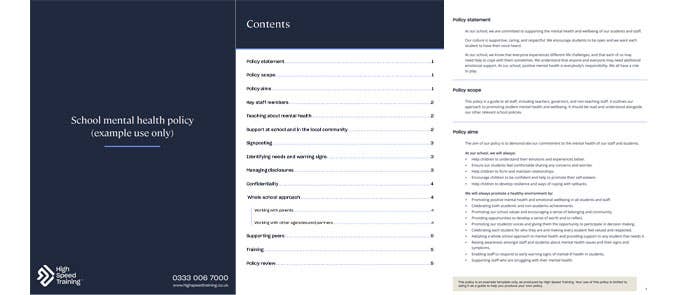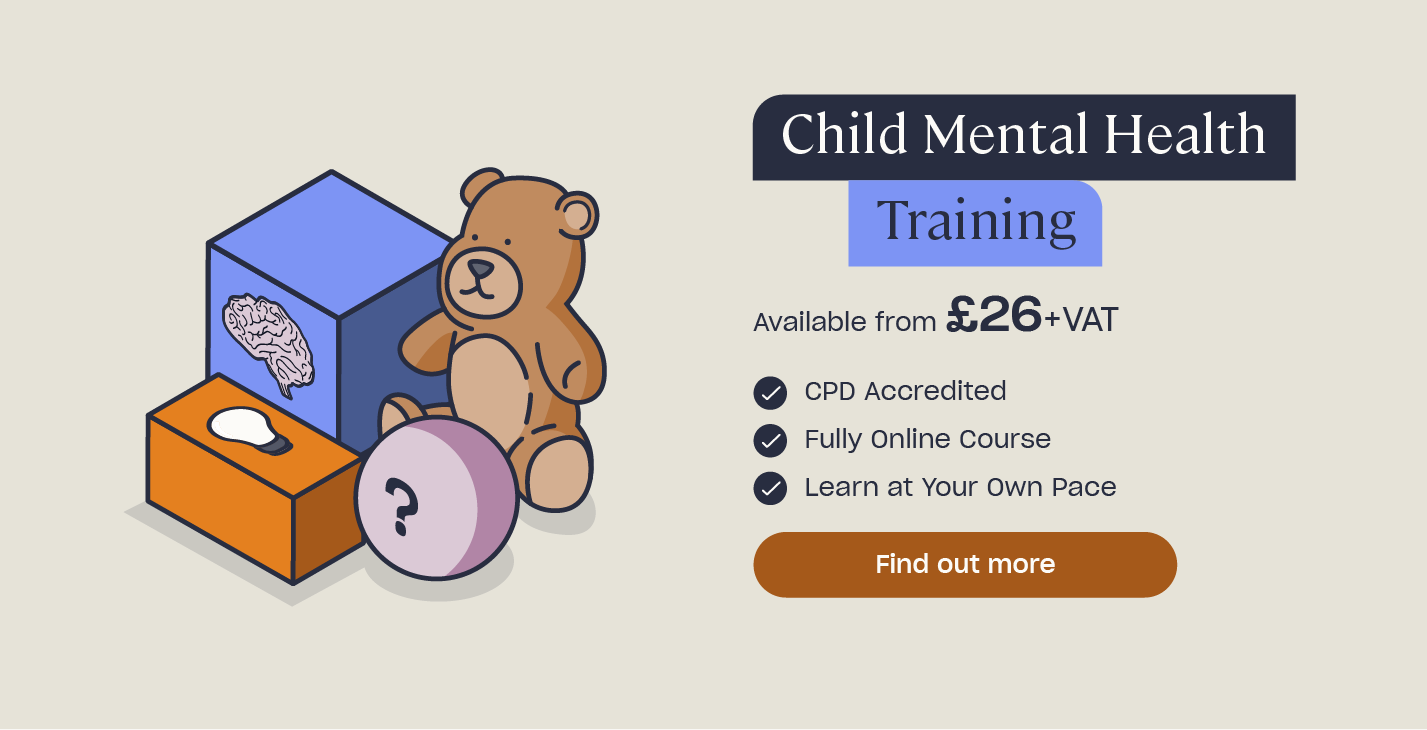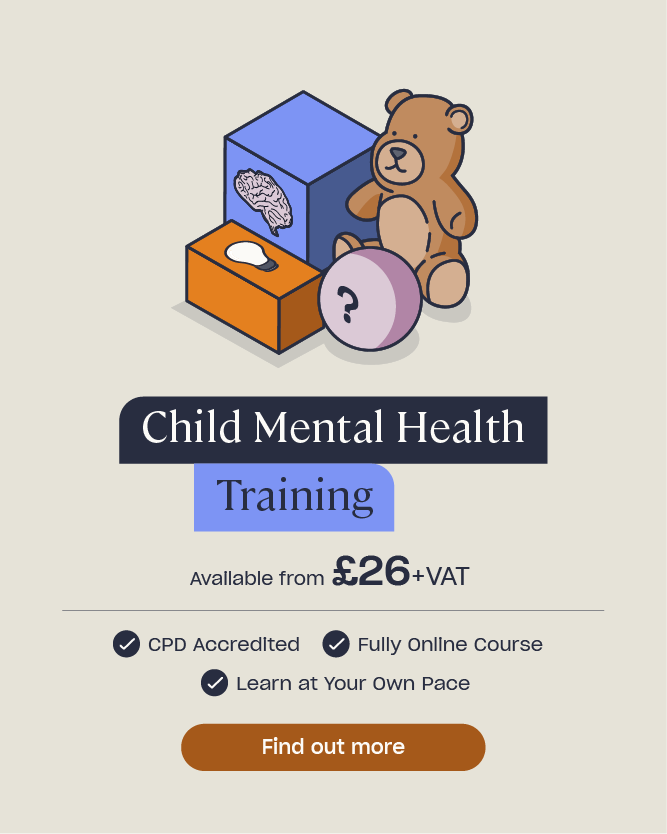How to Write a School Mental Health Policy
Statistics tell us that three in four mental illnesses start in childhood. This means that, if you work in a school, you are likely to spend a lot of time with children who are struggling with their mental health.
A school mental health policy is a document that explains the school’s commitment to its students’ mental health. It outlines how the school will support its students, its ongoing commitment to staff training, and how it will work with the wider community to promote student wellbeing. We’ve included an example policy at the end of the article to help you develop your own.

Why Do We Need a School Mental Health Policy?
Many mental health problems begin at a young age. Young Minds charity report that one in five young adults, and one in ten children, have a diagnosable mental health disorder. That translates to roughly three children in every classroom.
Mental health issues can affect a student’s emotional wellbeing as well as their educational attainment. The school environment has multiple pressures that can provide a catalyst for mental health issues, including the pressure of exams and deadlines as well as the desire to make friendships and maintain them. Keeping Children Safe in Education states that staff should also be aware that mental health problems can, in some cases, be an indicator that a child has experienced or is experiencing maltreatment.
As such, addressing mental health in schools is essential and developing a school mental health policy is a key starting point in this. This policy should address student mental health and show both students and their parents that the school is committed to the wellbeing of its students. Additionally, it signals to students that the school is understanding of mental health issues and encourages them to come forward with their difficulties.
A mentally healthy school is one that has a whole-school approach to the topic of mental health and sees the mental health of its students, staff, and parents as everybody’s responsibility. Developing a school mental health policy is an essential part of achieving this and an important step towards making a positive change in your school.
Need a Course?
Our Child Mental Health Training explains some of the common emotional, behavioural and hyperkinesis disorders, how you can identify and support a child who may be struggling, and how to promote positive mental health and wellbeing.
What to Include in Your Mental Health Policy
Your school mental health policy should include the following sections:
- Policy Statement
- The Policy Scope
- The Policy Aims
- Key Staff Members
- Teaching about Mental Health
- Support at School and in the Local Community
- Signposting
- Identifying Needs and Warning Signs
- Managing Disclosures
- Confidentiality
- Whole School Approach
- Working with Parents
- Working with Other Agencies and Partners
- Supporting Peers
- Training
- Policy Review
We will highlight all of these sections and their purpose within our school mental health policy template.
How to Write Your School Mental Health Policy
How you write your policy is just as important as what you include in it. You need to develop a policy that’s useful and that everyone can understand. Your policy should be:
Practical. Your policy needs to be comprehensive and give parents and staff a thorough understanding of your commitment to student mental health. It should provide a detailed explanation of how your school will approach mental health issues and how it will ensure the mental wellbeing of its students.
Clear. Your policy should be simple to use. It should have a logical structure, be easy to understand, and be written in clear, direct language.
Relevant. Make sure that your policy is relevant to your school and environment. Include details that are specific for your school, such as relevant staff names, other relevant policies, and certain procedures that you have in place.
Current. You must ensure that your policy remains current. This means that you should update it whenever something changes. For example, if a relevant staff member leaves or if something happens that proves your policy needs revising.
Well considered. Your policy shouldn’t be rushed or written quickly without consideration. You need to carefully consider what needs to go into it, what practical information you need to include, and how to structure it in a clear and logical format.

Policy Template Example
We’ve written a template to show you how to structure your school mental health policy and what you should include.
You must develop a child mental policy that’s relevant to your own school or organisation. Our template is designed for example use only and is simply a guide to help you create your own policy.
All schools have a responsibility to address mental health within their organisation. Writing a school mental health policy is key for showing a commitment to mental health, encouraging students and staff to be open, and developing a mentally healthy school. Find more about how your school can promote positive mental health, here.
What to Read Next:
- Child Mental Health Quiz
- Guide to Safeguarding Children Legislation
- What is the Purpose of School Policies?
- Teenage Stress Quiz
- Child Mental Health Training












